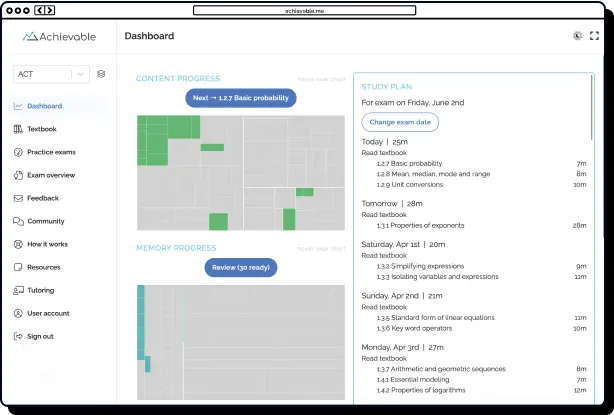
How to pick a leading liberal arts college in 2025




Table of contents
- What makes a liberal arts college unique?
- Why choose a liberal arts college?
- Key factors to consider when choosing
- Top liberal arts colleges
- Williams College (MA)
- Amherst College (MA)
- Swarthmore College (PA)
- Pomona College (CA)
- Bowdoin College (ME)
- Middlebury College (VT)
- Wellesley College (MA)
- Carleton College (MN)
- Claremont McKenna College (CA)
- Davidson College (NC)
- Rankings vs. fit: what truly matters
- The role of liberal arts colleges in today’s job market
- Tips for applying to liberal arts colleges
- Financial considerations
- Final Thoughts
Liberal arts colleges offer an educational experience prized for its emphasis on undergraduate learning, close connections between students and professors, and a curriculum designed to foster both broad and critical thinking, as well as effective communication skills. When considering top liberal arts colleges in the U.S., it’s important to explore how they differ from larger universities, especially regarding teaching, curriculum, and overall college requirements for admission and graduation.
If you or a student you know is evaluating where to apply, this post delivers a comprehensive, practical overview of the top liberal arts colleges. It allows you to compare programs based on what truly matters most while providing you with insights into how liberal arts colleges and larger universities differ.

What makes a liberal arts college unique?
- Undergraduate focus: One major difference in the debate over liberal arts colleges versus universities is that top liberal arts colleges in the U.S. prioritize the undergraduate experience above all, rather than focusing on graduate research programs.
- Small classes: At a highly rated liberal arts school, you’ll benefit from seminars, discussion-based learning, and frequent, meaningful access to professors.
- Breadth + depth: A hallmark of these institutions is a liberal arts education that emphasizes cross-disciplinary thinking (humanities, sciences, social sciences) and the flexibility for students to explore different fields.
- Tight-knit communities: Liberal arts colleges also differ in community feel; students at these schools enjoy abundant opportunities for leadership, close advising, and campus involvement within a supportive, close-knit environment.
Why choose a liberal arts college?
- Personalized mentorship: Faculty know you by name and can mentor you into research, internships, and graduate school.
- Academic rigor: Many of the top liberal arts colleges in the U.S. accept students with ACT or SAT scores on par with those of other top universities, emphasizing a high standard of academic excellence.
- Curriculum flexibility: You can try different fields before committing to a major.
- Skills employers want: Critical thinking, writing, collaboration, and skills that transfer across careers.
- Strong alumni networks: Smaller schools often have active alumni who help with internships and job placement.
Key factors to consider when choosing
- Academic programs and any unique majors or centers.
- Class size and student-to-faculty interaction.
- Campus culture (competitive vs. collaborative, activist vs. quiet).
- Location (rural vs. suburban vs. near a city) and travel logistics.
- Financial aid generosity and actual cost after aid.
- Career outcomes (grad school placement, employment support, internship pipelines).
Top liberal arts colleges

Williams College (MA)
- Strengths: Deep academic rigor, strong humanities and arts, and excellent undergraduate research opportunities.
- Culture & vibe: Intense intellectual culture with a focus on close faculty mentorship and small seminars. Students are driven, but many describe the community as supportive.
- Distinctive: Tutorial-styled options and a strong emphasis on close faculty-student advising.
- Practical note: Williams rewards demonstrated intellectual curiosity, highlighting specific projects, writing, or research in your application.

Amherst College (MA)
- Strengths: Broad liberal arts curriculum with flexibility to design part of your course of study. Strong social sciences and humanities.
- Culture & vibe: An open curriculum vibe, with students choosing widely and often double-majoring. Community tends to be collaborative and socially engaged.
- Distinctive: Open curriculum (few distribution requirements), which gives academic freedom.
- Practical note: Demonstrate independent thinking and clear academic interests; Amherst values intellectual initiative.

Swarthmore College (PA)
- Strengths: Strong for social sciences, engineering (small program), and interdisciplinary work.
- Culture & vibe: Intellectually rigorous and values civic engagement; students are academically serious and community-minded.
- Distinctive: Honors-style academic structure and strong ties to research opportunities.
- Practical note: Essays and recommendations should show depth of thought and a record of sustained academic engagement.

Pomona College (CA)
- Strengths: Broad strengths across sciences, arts, and social sciences; strong pre-professional advising.
- Culture & vibe: Balanced, high academic standards plus a sunny, campus consortium benefit (see distinctives).
- Distinctive: Part of the Claremont Colleges consortium, access to shared courses, libraries, and social life across schools.
- Practical note: If you value variety (such as city access and consortium resources) and interdisciplinary options, be sure to emphasize these in your application.

Bowdoin College (ME)
- Strengths: Known for strong programs in environmental studies, government, and marine sciences.
- Culture & vibe: Community-focused, outdoors-friendly, and often progressive in campus life and sustainability.
- Distinctive: Emphasis on community service and environmental stewardship.
- Practical note: If you have interests in outdoors/environmental activities or community engagement, make these visible in your extracurricular descriptions and essays.

Middlebury College (VT)
- Strengths: Global studies, languages, and international programs; strong environmental and political studies.
- Culture & vibe: Globally minded with robust language and study-abroad offerings. The community is intellectually curious with a strong outdoors culture.
- Distinctive: World-class language programs and opportunities for immersive global study.
- Practical note: Applicants with international interests, language study, or global internships will fit well here.

Wellesley College (MA)
- Strengths: Excellence across the liberal arts with notable leadership training and alumnae networks.
- Culture & vibe: Women-centered learning environment that emphasizes leadership, academic excellence, and professional preparedness.
- Distinctive: Strong mentoring, active alumni who champion graduates.
- Practical note: Show leadership, commitment, and intellectual curiosity: Wellesley values graduates who lead and give back.

Carleton College (MN)
- Strengths: Known for both sciences and humanities; strong undergraduate research.
- Culture & vibe: Collaborative and intellectually friendly; students often mention supportive peer culture.
- Distinctive: Balance of rigorous academics and community involvement; strong teaching emphasis.
- Practical note: Demonstrate how you thrive in collaborative academic environments and enjoy close faculty engagement.

Claremont McKenna College (CA)
- Strengths: Economics, government, and public policy are strong areas of focus, as are leadership and internship placement.
- Culture & vibe: Pragmatic and career-oriented while still liberal arts-focused. Students are often ambitious, civic-minded, and actively involved in internships.
- Distinctive: Claremont consortium resources, with an emphasis on government, economics, and leadership.
- Practical note: Strong applicants often demonstrate a strong interest in policy, economics, leadership roles, or internships.

Davidson College (NC)
- Strengths: Balanced liberal arts with a strong honor code and engaged campus life.
- Culture & vibe: Honor-code culture fosters independent learning and high integrity. Close-knit, supportive environment.
- Distinctive: Honor code strongly shapes student responsibility and academic life.
- Practical note: If you value integrity, independent work, and close community ties, be sure to highlight these character traits.
Rankings vs. fit: what truly matters
- Rankings can help identify excellent schools, but they don’t capture campus personality, class size, or fit.
- Fit matters more: a mid-ranked school where you thrive academically and socially will serve you better than a “top” school where you feel lost.
- Ask yourself: Do I prefer close mentorship or large research options? Rural calm or urban access? A collaborative culture or a highly competitive one?
The role of liberal arts colleges in today’s job market
- Transferable skills: Employers prize critical thinking, writing, and communication, the strengths of liberal arts grads.
- Career paths: Graduates pursue careers in consulting, technology, education, public service, law, medicine, or academia.
- Reality check: Major alone doesn’t determine job prospects; internships, networking, and career services matter.

Tips for applying to liberal arts colleges
- Essays: To meet college requirements, be specific about why that college is the right fit for you. Reference academic programs, notable professors, or unique aspects of campus culture that align with your interests and goals.
- Recommendations: Fulfilling college requirements often means choosing teachers who can highlight your intellectual curiosity and distinctive classroom contributions in their letters.
- Activities: Colleges look for depth over breadth when reviewing college requirements. A sustained, long-term commitment to a club, sport, or research project demonstrates dedication and stands out in applications.
- Visits & interviews: If college requirements include demonstrated interest, consider visiting their campus or attending virtual events. Your engagement shows you are genuinely interested in the college and helps strengthen your application.
Financial considerations
- Sticker price vs. net price: Many top liberal arts colleges offer generous need-based aid. Always check the school’s net price calculator.
- Merit aid: Less common at some selective schools that focus on need-based aid, but available at others.
- ROI: Consider scholarship packages, internship pipelines, and alumni support when weighing cost.
Final Thoughts
A liberal arts college can be a truly transformative environment for students who favor personalized attention and a more flexible curriculum. These vibrant campuses provide students with the opportunity to form close relationships with mentors, explore innovative ideas, and cultivate essential critical thinking skills. When considering liberal arts colleges vs. universities, it’s important to look beyond rankings; the “top” list is just a starting point. The key question becomes: which of the top liberal arts colleges will nurture your personal and academic growth most effectively?
To find your best fit, visit as many campuses as possible, connect with current students, and envision spending four years immersed in that community. Be sure to check the ACT, SAT, and other admission requirements to ensure you’re prepared. Express in your admissions essay why a certain college’s unique offerings and community speak to you. Fit, not just prestige, is what will define your college experience and lay the foundation for your early career journey at a liberal arts institution.

